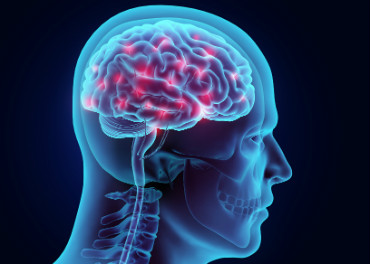Recent Research on the Organization of Human Speech
An article in the journal Nature[1] details some fascinating research into the functional organization of human speech in the sensorimotor cortex of the brain. The researchers recorded neural activity directly from the cortical surface in three human subjects implanted with high density multi-electrode arrays, as part of their preparation for epilepsy surgery. To quote the authors of this article:
 Speech communication critically depends on the ability to produce the large number of sounds that compose a given language. The wide range of spoken sounds results from highly flexible configuration of the vocal tract, which filters sound produced at the larynx through movements of the lips, jaw and tongue that are coordinated precisely. Each articulator [the authors mean the larynx, tongue, lips, jaw] has extensive degrees of freedom, making a large number of different speech movements possible. How humans exert such precise control despite the wide variety of movement possibilities is a central unanswered question.
Speech communication critically depends on the ability to produce the large number of sounds that compose a given language. The wide range of spoken sounds results from highly flexible configuration of the vocal tract, which filters sound produced at the larynx through movements of the lips, jaw and tongue that are coordinated precisely. Each articulator [the authors mean the larynx, tongue, lips, jaw] has extensive degrees of freedom, making a large number of different speech movements possible. How humans exert such precise control despite the wide variety of movement possibilities is a central unanswered question.
The recordings were made as the subjects expressed certain vowels and consonants and the results, in this highly technical article, show a rich coordination of multiple sites on this part of the brain cortex, producing vowel or consonant sounds. They were able to map the spatial distribution of neural networks for the individual articulators and to show, to some degree, the millisecond temporal relationship of the activity of each area.
A particular neural circuit, known as the dorsal laryngeal representation, was found to be unique to humans. In other words it is not found in non-human primates.
The article does not pretend to understand how this coordination of sounds is achieved but merely maps the spatial and temporal electrical activity in one small area of the brain. It gives us an insight into the complexity of uttering single syllables but does not help us know how speech is initiated or understood or how such syllables are put into the richness of human language.
We know already that children, the world over, can acquire language effortlessly. We also know that only humans have language. There is strong evidence that we are born with a ‘universal grammar’ that is hard wired in our brains. Other animals can make sounds to communicate and to represent certain objects, raise alarms for danger etc but this is not the same as language. Language is a highly structured rule based hierarchical system, allowing the most diverse of ideas to be communicated and is only found in humans. We also have a particular vocal anatomy that allows for the versatility of speech. Our larynx, for example, has to be much lower in the vocal tract than that of any other primate. We know from this article that there is at least one very complex piece of neural circuitry in the human brain that is not present in other primates.
The question then is how did such, multiple, coordinated and highly complex differences from other primates arise? The Neo-Darwinian answer is that random mutations occurred in DNA which conferred advantages in communication and were naturally selected over time to be passed down genetically. However such an assumed naturalistic scenario is unproven and is without any data to back it up. It is, in fact, a position of faith rather than of science.
Current evolutionary theory teaches that other primates, in particular chimpanzees, shared a common ancestor with humans about 5 million years ago. It is assumed that we are descended from animals such as Australopithecus afarensis which had a brain about 3 times smaller than ours and lived approximately 3 million years ago in Africa. This is an extremely short time in evolutionary terms. The issue then is whether random mistakes in DNA since that time can account for the acquisition of language, let alone the host of other changes in intellect that separate humans from other primates. Bearing in mind the small number of hominids considered to have been alive in any one time and also the relatively long reproductive intervals that humans have, we are looking at very few individuals in which the random changes could have occurred. Indeed looking at this objectively, one baulks at the probability of getting even the most simple of new neural circuits, along with anatomical changes in the vocal tract that are required to achieve speech. We need to remember that speech is the result of a host of coordinated areas in the brain of a complexity that is far beyond anything ever designed by man. Could accumulated random mistakes in the DNA produce this?
This article in the journal Nature gives just a glimpse into the intricacies of the sensorimotor area of the cortex that deals with speech. This is at the mere fringes of a beautifully coordinated system that allows us to have language. It is high time that we challenge the stock evolutionary answers given for the sudden appearance of such exquisite new complexity.
References
[1] Bouchard, K.E., Mesgrani, N., Johnson, K. & Chang, E.F. Functional organization of human sensorimotor cortex for speech articulation. Nature 495, 327-332 (2013)
Image credit:
Thumbnail and article - yodiyim, Fotolia images
Antony Latham, 20/07/2017